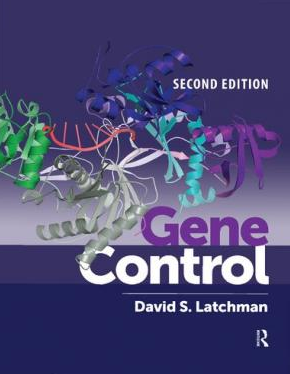Gene Control 2nd Edition by David Latchman, ISBN-13: 978-0815345039
[PDF eBook eTextbook]
- Publisher: Garland Science; 2nd edition (February 23, 2015)
- Language: English
- 505 pages
- ISBN-10: 9780815345039
- ISBN-13: 978-0815345039
Our understanding of two major themes in gene regulation has advanced considerably in the last few years and this is reflected in this new edition. The first of these is the regulation of chromatin structure and its role in gene regulation. Although a chapter was devoted to this topic in the first edition of Gene Regulation, its role was much less well understood at that time than, for example, that of DNA-binding transcription factors. However, over the last 25 years this topic has assumed a central position in our understanding of gene regulation. It is now clear, for example, that as well as the genomic DNA sequence, there exists an epigenome (‘epi’ is Greek for ‘on’) involving modifications of the DNA and of the proteins, such as histones, associated with it. Moreover, this epigenome varies between different tissues and cell types in contrast to the relative invariance of the genomic DNA sequence. This allows the epigenome to play a key role in the regulation of gene expression. To reflect this, all the sections dealing with this topic have been extensively revised and updated, while the title of Chapter 3 has been changed to ‘The Epigenome: Role of Chromatin Structure in Gene Control.’ Moreover, additional sections have been added on these modifications as a target of cellular signaling pathways (Section 8.5) and on the role of the epigenome in cancer (Section 11.4) and other human diseases (Section 12.2).
The second major area to have advanced hugely in recent years is that of regulatory RNAs. At the time the first edition of Gene Regulation was published, it was believed that the regulation of gene expression was produced exclusively by regulatory proteins and the possibility of regulatory RNAs had not been put forward. It is now clear, however, that such regulatory RNAs are as important in the regulation of gene expression as regulatory proteins. Moreover, although small regulatory RNAs (20–30 bases in length) were discussed in the first edition of Gene Control, further studies have now indicated that longer regulatory RNAs (200 bases or more in length) are also of critical importance in the regulation of gene expression. Accordingly, the sections of this book dealing with this area have been updated and expanded to reflect the key role of all types of regulatory RNAs and to give equal emphasis to the different classes of such RNAs. Moreover, additional sections have been added on the role of regulatory RNAs in cancer (Section 11.6) and other human diseases (Section 12.4).
As with the first edition, the second edition of Gene Control is organized into two parts. The first part provides a detailed mechanistic analysis of the processes involved in controlling gene expression. After an introductory chapter, three pairs of chapters deal with the fundamental processes involved in gene regulation. In each pair of chapters, the first chapter deals with the basic process itself and the second deals with the manner in which it is involved in regulating gene expression. Thus, Chapters 2 and 3 deal with chromatin structure and its role in gene regulation, Chapters 4 and 5 deal with the process of transcription itself and the manner in which it is regulated, while Chapters 6 and 7 deal with post-transcriptional processes and their role in the regulation of gene expression.
In contrast, the second part of the book deals with specific biological processes and the role played by gene control in their regulation. Thus, Chapter 8 deals with cellular signaling processes, Chapter 9 deals with the regulation of gene expression in development and Chapter 10 discusses the key role played by gene regulatory processes in the specification of individual differentiated cell types. Finally, Chapters 11 and 12 deal with the alterations in gene expression that can cause specific human diseases. Thus, Chapter 11 discusses the role of gene regulation in cancer while Chapter 12 deals with gene regulation in inherited and infectious diseases of humans, as well as discussing the manner in which advances in our understanding of gene regulatory processes may lead to improved therapies for human diseases.
Table of Contents:
1. Level of Gene Control
2. Structure of Chromatin
3. The Epigenome: Role of Chromatin Structure in Gene Control
4. The Process of Transcription
5. Transcription Factors and Transcriptional Control
6. Post-transcriptional Processes
7. Post-transcriptional Regulation
8. Gene Control and Cellular Signaling Pathways
9. Gene Control in Embryonic Development
10. Control of Cell Type-specific Gene Expression
11. Gene Regulation and Cancer
12. Gene Regulation and Human Disease
13. Conclusion and Future Prospects
What makes us different?
• Instant Download
• Always Competitive Pricing
• 100% Privacy
• FREE Sample Available
• 24-7 LIVE Customer Support






Reviews
There are no reviews yet.